Showing 73–84 of 142 results
The book investigates some of the most discoursed conducts centring around the characters in the Mahabharata, concluding that these characters reinstate ‘purusartha’ (four basic aspects of human existence) and its relevance in shaping constructive social–political standards and assuring intellectual, emotional and spiritual evolution for individuals from all walks of life. Through rationalized arguments, the book debunks age-old attitudes/perceptions that have kept these characters from being understood from beyond. This way, the book shifts its focus from studying the epic solely for its sacredness to seeking its relevance in the modern way of life and ways in which it can offer guidance through present-day challenges and struggles.
The book investigates some of the most discoursed conducts centring around the characters in the Mahabharata, concluding that these characters reinstate ‘purusartha’ (four basic aspects of human existence) and its relevance in shaping constructive social–political standards and assuring intellectual, emotional and spiritual evolution for individuals from all walks of life. Through rationalized arguments, the book debunks age-old attitudes/perceptions that have kept these characters from being understood from beyond. This way, the book shifts its focus from studying the epic solely for its sacredness to seeking its relevance in the modern way of life and ways in which it can offer guidance through present-day challenges and struggles.
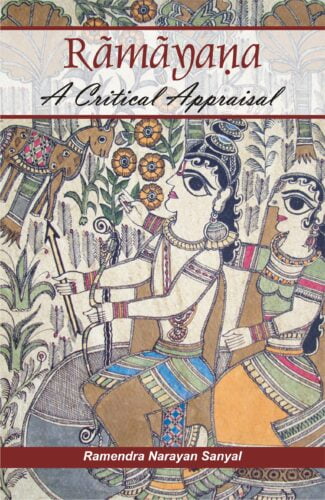
Written in a simple and lucid language, this book discusses the major events of the Ramayana, analysing and interpreting them from different angles. This volume should fascinate readers who want to gain a fresh perspective on the glorious Ramayana tradition.
Based on the Valmiki Ramayana, this book discusses the major events of the Ramayana including those in the Uttara-Kanda, analyzing and interpreting them with a fresh approach. Written in a simple and lucid style, the work deals with the birth of Rama, his destruction of rakshasas accompanied by his brother Lakshmana, of Dasaratha, Ramas exile, the many developments that led to the war between Rama and Ravana and the later events like Ramas coronation, his abandonment of Sita and the last journey of Lord Rama. It brings out the many qualities of Rama like virtuousness, courage, compassion, equanimity of mind, devotion to duty and truth, and selflessness that make Rama a glorious, divine figure and the story in the Ramayana an unparalleled epic of the world. It also discusses the controversial acts of Rama like his killing of Vali and humiliation of Sita after her rescue. It underlines the importance of the example of Rama and the teachings of the Ramayana in the contemporary world.
The volume will fascinate a range of readers general readers as well as scholars of Indian religion and culture who want to gain a fresh perspective on the glorious Ramayana tradition.
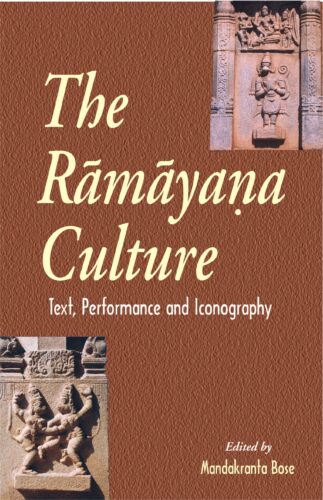
The essays in this volume approach the Ramayana from different perspectives textual criticism, art and architecture, and film to understand its ideological and aesthetic meanings. They address critical issues like the seminal status of Valmiki, gender representation in Ramayana and the importance of the so-called Ramayana derivatives.
These essays, originally presented at an international conference, are in the forefront of the modern response to an ancient work that has gained a new critical and social relevance in contemporary scholarship. Approaching the Ramayana from several angles in an attempt to understand its aesthetic and ideological meaning, they examine the epic through the perspectives of textual criticism, art, architecture and film. Thereby they address critical issues such as the seminal status of Valmiki, the underlying problem of canonicity itself, the importance of other — so-called derivative — Ramayanas, the implications of gender representation, and the cultural manipulation of social ideals relating to the position of women and the idealisation of love that achieves its highest value in marriage. Using the methods of rigorous textual and historical investigation, each essay seeks not only to uncover the layers of meaning in the complex structure of the epic in its varied forms but also to situate it critically in the cultures of South and Southeast Asia.
The book commences with a short wrap-up of the history of Cambodia with the arrival of Sage Kaundinya and comes down to the coronation ceremonies of Cambodian monarchs to whom the brahmin Grand Master hands the statues of Lords Siva and Visnu as the keeper of Divine Values (dharmaraja), and the Sacred Sword with the mantra ‘Take, for Thou art the Lightning of Indra’. The Grand Master is called Rama-rajya-adhipati. Prof. RaghuVira wanted to publish all the 442 Sanskrit inscriptions of Cambodia in Devanagari and their facsimiles. Prof. Coeaes sent their list which has been reproduced here. It shows how Sanskrit was the language of the state till the 12th century. After long-drawn negotiations the Government of Cambodia sent monk Ven. Candravarna in 1961. He obtained the Ramakirti from his uncle (parts 1-6, 8-10, 75). He used to transcribe the Cambodian text into Devanagari and give a resume which wrote down in English. Both have been reproduced here
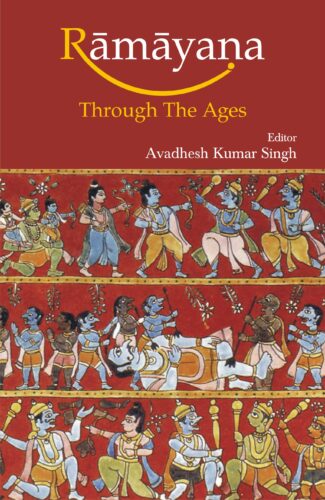
The tradition of Rama-Katha existed in many folk and oral forms before Adikavi Valmiki wrote the Sanskrit Ramayana. The subsequent centuries witnessed composition of Ramayana in Tamil, Malayalam, Bengali, Assamese, Hindi, Kashmiri, Gujarati, Marathi, etc. This volume shares their many similarities and dissimilarites.
The long and continuous tradition of Rama-Katha existed in many folk and oral forms before Adikavi Valmiki composed it in Sanskrit in written form as the Ramayana, a book of divine harmony . . . a bottomless and shoreless ocean of love, piety and clemency. The subsequent centuries witnessed composition of Ramayana in many Indian languages like Tamil, Malayalam, Bengali, Assamese, Hindi, Kashmiri, Gujarati and Marathi among others. These versions share many similarities and some dissimilarities among them, though their epicentral concerns remain the same.
The present volume comprising more than a dozen articles by distinguished scholars discuss Ramayana in different Indian languages. The volume, it is hoped, would lead to mutual illumination of Rama-Katha in different Indian languages and facilitate greater understanding of its timeless appeal and journey through ages.
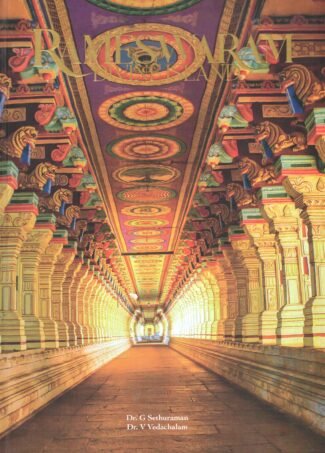
This book explores Rameswaram’s religious, cultural, and historical significance, detailing its temple architecture, sacred thirthas, and artistic heritage, making it invaluable for readers, students, and researchers alike.
Rameswaram, one of the renowned religious centers of India, is a well known sacred spot both for the Saivites and Vaishnavite frente period ferves as one of the cultural centers and pithru oriented spots of the sub continent for several centuries. The history and culture of any region, in the Indian sub-continent, often centers round a temple. This is actually true in the case of Rameswaram, where the temple makes a significant contribution not only to the religious life of the people, but also serves as the nucleus around which the social and cultural life of the people revolves. As this sacred place has the continuous history from very ancient past to this day, the temple there in also has been growing continuously through the centuries starting from a small one at the time of the period of the Saiva Nayanmars to the vast temple complex at the end of the Sethupati period. The temple accommodates, in addition to the sacred thirthas, beautiful architectural buildings and hundreds of marvelous sculptures which not only depict the epic and puranic themes but also reflect the contemporary social, cultural and folk traditions. The present book “Rameshwaraam – Divine Island” explains in detail the spot as a religious as well as the thirtha center and their social and cultural importance in a systematic and scientific manner. It also traces the history art and architecture of the temple. It would be of much useful to the general readers, students and researchers to understand the cultural importance of the sacred spot and artistic beauty and their legendary background.
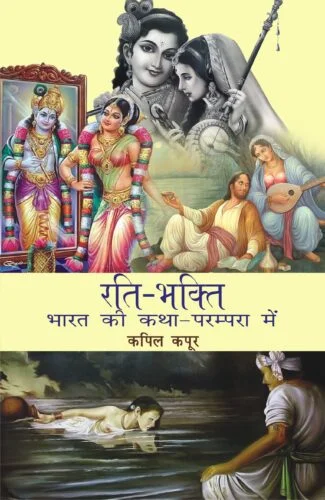
The concept of love-devotion is visible since ancient times in Indian history. In the poems and narrations of love-devotion human love has been depicted in the form of divine love. The love is permanent sentiment of Shringara rasa. Shringara rasa is of utmost importance in the tradition of textual contemplation.
There is intense interrelationship of love and devotion in narrative tradition of India. The concept of Rati-bhakti (love-devotion) is visible in Indian history since ancient times. Love and devotion are two facets of the one and the same fact. In the poetry and prose of Rati-bhakti, the human love is regarded as divine. Here, God and devotee are seen as lovers and, on the other hand, lovers are considered as the form of God himself.
The knowledge of Shastras, not being accessible to all, is propagated through narration. There are unlimited treasures of narratives in all languages and scholarly traditions of India as well as various themes related to manhood-quartet of narration-treasure. In this book, the main focus is on Rati-bhakti (devotion to love). In the cogitation of poetry-text, shringara rasa is foremost and the fundamental one for thinkers like Bhojaraj. The permanent rasa of shringara is love and how this is accomplished in shringara and devotion, is beautifully depicted in this book.
In the folk tales of Punjab, the narrators/poets of Rati-shastra/narrations see love-adorable in divine form and in devotional narrations and poetry, the poets and narrators see their God as their lover or beloved. This love-devotion tradition originated in India in the seventh century ce through the Tamil Alvars in their prabandhas. This tradition remained alive till nineteenth century in the folk tales of Punjab. Since then, owing to Western influence, the love is seen as lust in place of devotion.
In this book the contemplation has been done on tradition, intellectual tradition, the knowledge of narration and means of narratives, the relationship between knowledge and narratives.
This book sould prove to be thought-provoking and interesting for students and scholars of philosophy, language and literature as well as for the common readers.

The volume speaks about the civilisational dimensions of religion and culture in India, unity and diversity of Indian civilisation, idea of civilisation, ecological crisis in the modern world, relationship between tribal and non-tribal religions, religious philanthropy, Christian influence on Hindu way of life in India, and concept of composite culture of India.
The volume deals with the civilizational dimensions of religion and culture in India. It underlines the point that religion and culture are important elements of all civilizations but it is their interplay that has given a unique feature to Indian civilization.
The essays interrogate the various western sociological discourses on civilization and articulate the alternative conceptualizations available in Indian sociology. They underline the unity and diversity of Indian civilization, present the idea of civilization as conjoined with the idea of civil society and study the ecological crisis in the modern world. They focus on the dialogical relationship between tribal and non-tribal religions, link between religion and environment, religious philanthropy and Christian influence on Hindu way of life in India. They also delve into the concept of composite culture in India, scrutinising aspects of folk religion and cultures to show, for instance, how art forms get accumulated into the idea of culture.
The volume will be of immense interest to a variety of scholars and students associated with the study of Indian religion and culture.

The book logically demolishes some widely-prevalent Puranic myths, focussing on eight celebrated men of remote historical past: Visvamitra, Parasurama, Bhagiratha, Rama, Vyasa, Krsna, Yudhisthira and Valmiki whose real characters have been shrouded in mythologisation.
Did Rama banish his wife Sita? Did Krishna have Radha for his companion? Was Shakuntala Vishvamitras daughter? Could Bhagiratha bring about the Gangas descent from heaven? Or, was Vyasa really the author of the traditional eighteen puranas? Addressing these and other similar questions, Dr. Bhargava retrieves historically valid answers from the maze of Puranic myths notwithstanding their deeply entrenched contradistinctions in the Hindu psyche. As a well known genre of Sanskrit literature, the Puranas, besides giving an account of the creation and the dissolution of the universe and the ages of Manus (the ancestors of mankind), also list the genealogies of Aryan kings and rishis, and the life stories of famous persons. They have accordingly lent to ancient Hindu lore a most remarkable air of veracity. The historicity of these personages is evident from the fact that the names of many of them occur in the Vedic literature also, which is much older than, and quite independent of these Puranas. A systematic, critical, and comparative study of the Puranas and the Vedic literature, as well as of other time- honoured literary sources conducted in this book makes it possible to discredit the myths that have grown around the names of many great men and women of ancient India. The book logically demolishes some of the widely-prevalent Puranic myths, focussing on eight celebrated great men of remote historical past: Vishvamitra, Parashurama, Bhagiratha, Rama, Vyasa, Krishna, Yudhishthira, and Valmiki whose real characters have been shrouded in the mist of centuries of mythologization. The author has demonstrated that when shorn of all myths, the real greatness of these men is fully revealed. A widely acclaimed work, Retrieval of History from Puranic Myths is now in its second, revised edition.
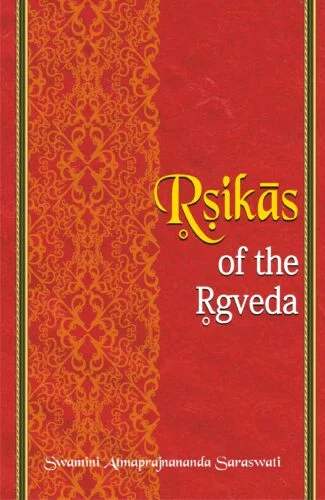
This interesting compendium highlights the importance and stature of women Rishikas in the Vedic literature as epitomes of spiritual attainments, and emphasises that the gender discrimination as seen in the Hindu traditional thought was a later phenomenon. It provides a list of women Rishikas and mantras envisioned by them.
The volume presents a study of the famous women Rishikas mentioned in the Vedic literature.
The book describes the great respect offered to seers in the Vedic literature and the equal importance given to Rishikas when compared to Rishis. Discussing how even women of the Vedic period were epitomes of spiritual attainment, the book admiringly points out that the gender discrimination seen in the Hindu traditional thought was a later phenomenon (such as that women are not adhikaris for the study of the Vedas). It states that there are twenty-seven women mantra-drashtarah in the Rigveda. It provides a list of these women Rishikas and deals with the mantras envisioned by them. The Rishikas are mentioned in the study on the basis of those who praised the deities, those who conversed with the seers and deities, and those who praised the self. The Rishikas mentioned in the Yajurveda, Samaveda, and Atharvaveda are also mentioned. Rishikas whose individual contributions are taken up in detail include Vagambhrni, Surya-Savitri, Shraddha, Daksina, Aditi, Ratri, and Urvashi, among others.
The volume is bound to be a handy reference book for all those interested in Indology, particularly students and scholars of Vedic and gender studies.
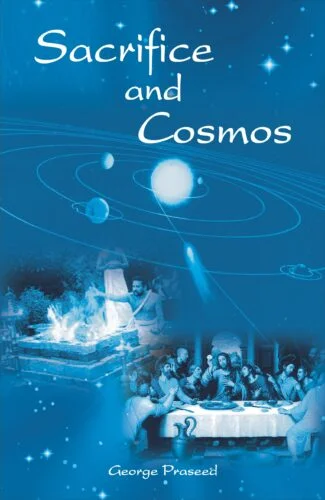
This book studies the way both Hinduism and Christianity have related sacrifice to the reality of the whole cosmos including the material universe Þ the Vedic view is seen as the best example of creation through sacrifice and the Christian cross as that of redemption through divine sacrifice.
In Hinduism, yajna has been at the centre of Vedic thought and practice, epic and Puranic literature. The Upanishads and the Bhagavad Gita add new dimensions to it through their spiritualization and interiorization and raising tapas and bhakti into sacrifice. The concept of sacrifice has been transformed into an ethical, spiritual and political value by Tilak and Gandhi in modern Hinduism. Christianitys interpretation of the mission of Jesus as a true, non-ritual sacrifice resulted in the gift of salvation to the world. The volume presents a deep understanding of the concept of sacrifice which is a central thought in Hinduism and Christianity. It studies the way the two traditions have related sacrifice to the reality of the whole cosmos including the material universe. The Vedic view is seen as the best example of creation through divine sacrifice, and the Christian Cross as that of redemption through divine sacrifice. The cosmic dynamism of the Eucharistic sacrifice is revealed through a study of four theologians. In this painstaking work sacrifice is examined as a complex universal phenomenon which has many-sided and multifaceted religious connotations. Thus it discovers the complementarity and interconnection between Vedism and Christianity. The book presents a new approach to study of religions and religious concepts. It would prove useful for scholars of religious studies.
| × |
|
Reflections on Indian Thought 1 x ₹765.00 |
| × |
|
Tantra-Mantra-Yantra in Dance 1 x ₹810.00 |
| × |
|
Valmiki Ramayana 1 x ₹1,440.00 |
| × |
|
1000 Full Moons 1 x ₹625.00 |